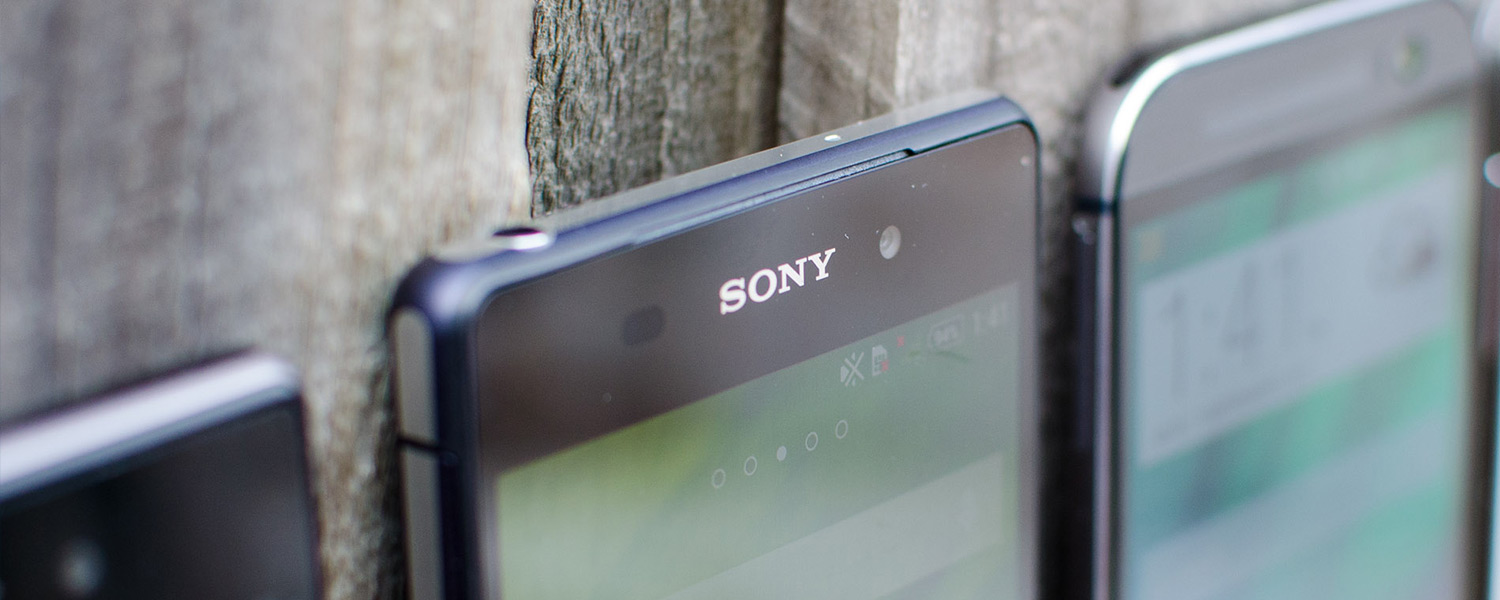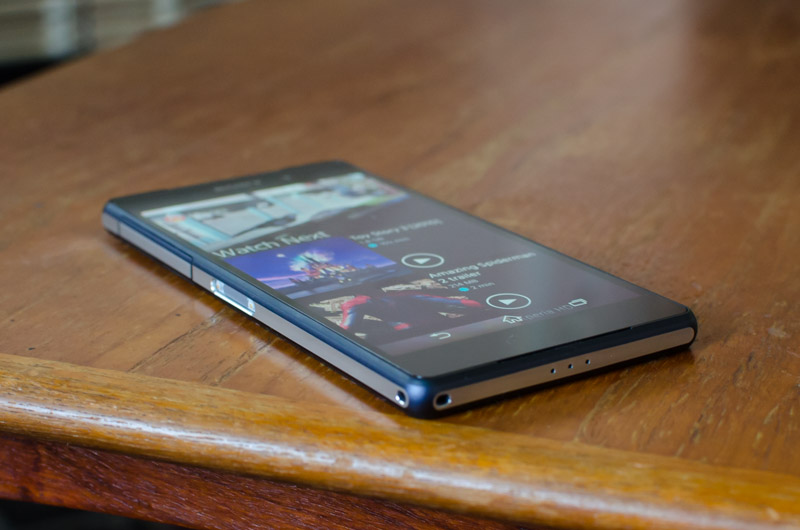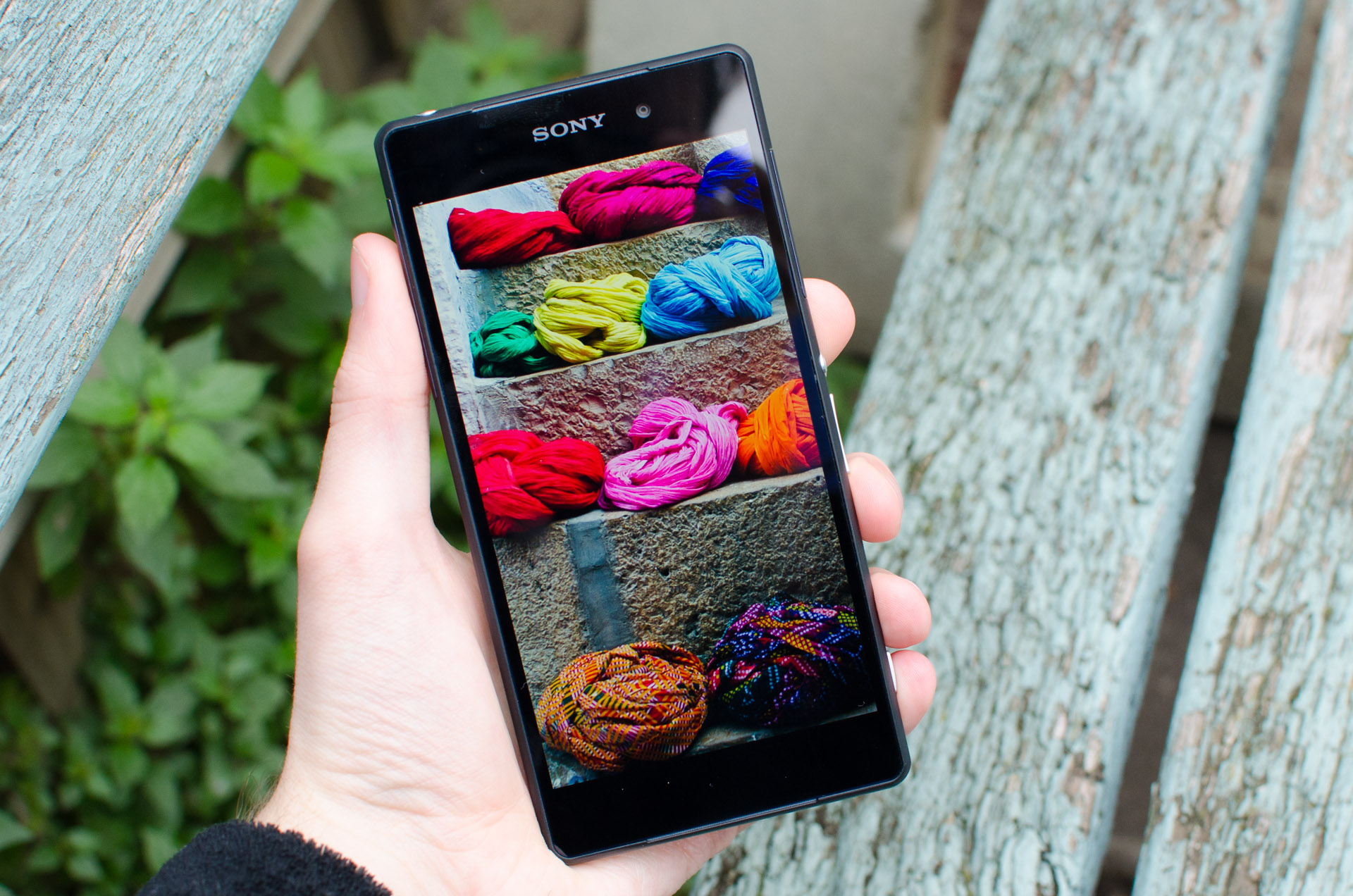Display: Finally an Improvement
For generations, Sony hasn't managed to get the display on their top end smartphone right. There's been no shortage of marketing terms used to describe the substandard panels, but finally with the Z2 that has changed for the better, the quality of the display that is, which is now competitive with other similarly-priced devices.
Technically-speaking we're looking at a 5.2-inch IPS TFT LCD panel with a resolution of 1920 x 1080, resulting in a pixel density of 424 PPI. Sony brands the panel itself as "Triluminous", which appears to refer to the display's wide color gamut, and "Live Color LED" apparently describes a new LED backlight technology. Oh, and there's also the "X-Reality Engine" to top it all off.
By choosing IPS Sony solved one of the major issues with the Xperia Z and Z1's displays: viewing angles. Previously, if you looked at the Z1's display slightly off center, there would be drastic washing out due to the poor viewing angles; a problem most noticeable when the Z1 was on a desk. On the Z2 however, there is no such issue, as you'll find the handset's display is viewable from nearly every angle.
The IPS technology also has some major benefits when it comes to color quality and accuracy. The panel used on the Xperia Z1 was dull, lacking in the contrast and saturation you'd expect from a flagship smartphone display. The Z2's display, on the other hand, looks fantastic in most aspects and gives some of my favourite panels - those found in the Galaxy S5, Nexus 5 and LG G2 - a serious run for their money.
Sony's "Triluminous" technology gives this particular IPS panel a wider color gamut than sRGB, which does reduce color accuracy on Android due to the lack of color management. The issue can rear its head as color banding when viewing gradients, but I definitely prefer having a too wide gamut to a too narrow gamut, which gives the appearance of slight oversaturation. However, if you're after perfect accuracy, you'll need to stick with trusted performers such as the Google Nexus 5.
Blacks on the Z2's display are reasonably deep for an LCD panel, but there is backlight bleed that you wouldn't get were this an AMOLED. This results in contrast that is good, but not the best I've seen. Meanwhile the new "Live Color LED" technology "combines red and green phosphor with blue LEDs" in the backlight to produce even, untinted light, and although the Z2 does come with a white balance adjustment feature, it doesn't seem necessary when the balance is great to begin with.
Like all LCD displays used on modern smartphones, there's a selection of filter layers between the liquid crystals and the protective glass to improve outdoor visibility. The display module appears very close to the protective glass, indicating few layers in its composition which helps cut down on reflections. The filter layers present also help when you're looking at the display in sunlight: I had no trouble reading the Z2's display in strong lighting, thanks to a bright backlight and effective glare reduction. In fact this panel is one of the easiest to view outdoors for those very reasons.
The Xperia Z2's 5.2-inch display packs a resolution of 1920 x 1080 (1080p), and in part thanks to the RGB stripe subpixel matrix, it looks crisp and clear. This is no surprise as we're looking at a pixel density of 424 PPI, and as I've mentioned countless times in the past, 1080p displays of this size look as good as paper when displaying text. Images and videos also look great on this screen, begging the question of whether we need higher resolution panels on smartphones.
Like many of Sony's past smartphones, the Xperia Z2 features the X-Reality Engine, which you can enable or disable through the device's settings. Basically this engine is a series of software-based enhancements, such as noise reduction and saturation increases, that are applied to photos and videos when you view them in the stock applications. In some situations images do look better with the X-Reality Engine on, however it comes at the expense of accuracy as it's essentially post-processing.
The X-Reality Engine also only takes effect in Sony's first-party applications, and only when you're actually viewing images or videos. It's an interesting implementation, especially as the display is now good enough that image quality doesn't need to be enhanced. I would turn X-Reality Engine off, and leave it off.
However Sony has included a few useful touchscreen-related features that bring the Xperia Z2 to feature-parity with other top-end handsets. You get a high-sensitivity touchscreen mode that allows you to use the display with gloves on, and there's also an option to turn on the display with a quick double tap. Both features will come at a cost of battery life, but can be quite useful.




